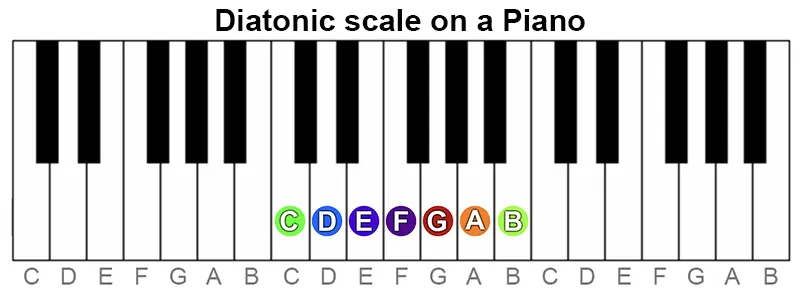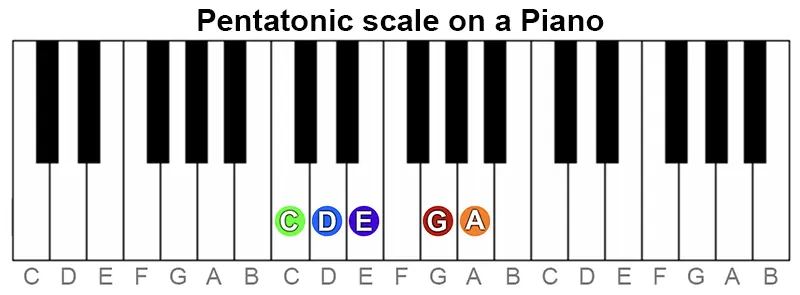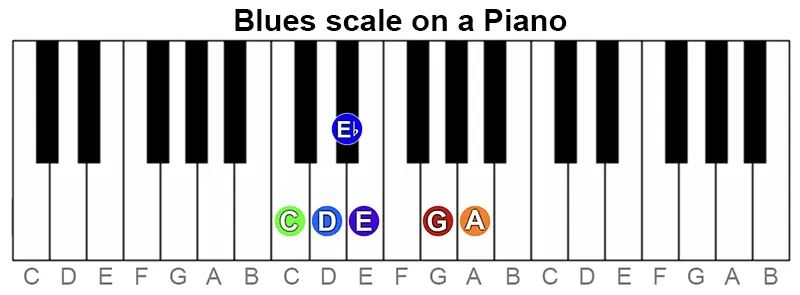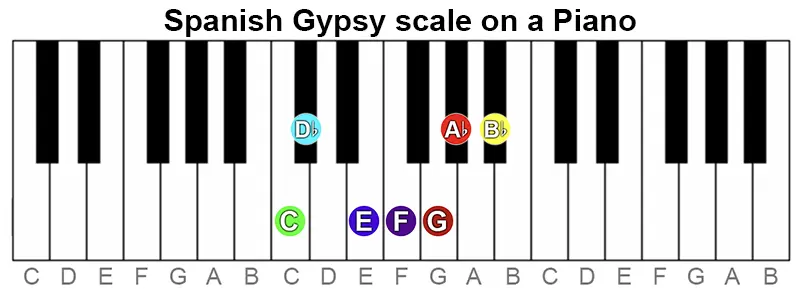What are scales?
Scales are a way of sorting pitches into groups giving the set of pitches a unique characteristic when played together. Certain formulas are use, along with music notes, to determine which pitch belongs to which scale. Here you’ll learn about the Chromatic scale and the different formulas that are use to build Diatonic scales, Pentatonic scales, Blues scales and even Spanish Gypsy scales.
Diatonic scale
The Diatonic scale is a 7 notes per octave scale. In order for a group of notes to be considered a Diatonic scale, specifically a Major Diatonic scale, the distance between notes must follow this interval: T – T – St – T – T – T – St.
The reason why it’s called a “Major” scale is because if you build a triad chord with the key note “C” you get a “C Major chord.” More about chords in the next lesson.
Steps on how to build a Major Diatonic scale:
- Choose a key (In this case we are using “C”) and apply this interval: T – T – St – T – T – T – St.
- Starting from C, the 2nd note in this scale will have to be a Tone above C. A Tone above C is D
- Then go another Tone up from D and you get E
- Next interval is a Semitone and if you go up a Semitone above E you get F
- Appling this interval further will get you the rest if the 7 notes
- If applied correctly the notes you get are C – D – E – F – G – A – B and back to C
C Major scale on a Piano
The notes of C Major scale are all white keys on a Piano.

Pentatonic scale
Pentatonic scale on a Piano

Blues scale
Blues scale on a Piano

Spanish Gypsy scale
Spanish Gypsy scale on a Piano
